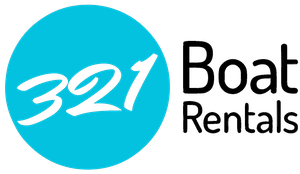The Indian River Lagoon around 321 Boat is the most diverse estuary in North America and one of the most diverse in the world. The lagoon is home to more than 4,000 species of plants and animals, including seahorses, a unique type of fish that live in the Indian River Lagoon.
Seahorses are important to the Indian River Lagoon because they provide food for other animals in the lagoon, such as birds, crabs, and other fish. They also help to keep the lagoon clean by eating small organisms, such as algae and plankton, which can cause water pollution if they become too abundant. Let’s meet these fascinating inhabitants of 321’s waterways and learn more about them!
There are two types of seahorses found in our waters: the lined seahorse and the dwarf seahorse. While they have a lot in common, they also each have their own characteristics that set them apart as well.
How Seahorses Differ from Other Fish
Seahorses are the only species of fish that have a neck! They are also the only species of fish that can swim in any direction, including backwards. They can also use their prehensile tails (like that of a monkey) to grip onto coral and other objects in the water.
Seahorses are monogamous, meaning they mate for life with the same partner. They have a unique form of reproduction in which the female deposits her eggs into the male’s pouch, and he fertilizes them and carries them until they are ready to hatch. This is known as “brood pouch incubation.” Seahorses are estimated to live up to 5 years in the wild and up to 10 years in captivity, based on the limited data we currently have.
Lined Seahorses (Hippocampus Erectus)
The lined seahorse is one of the most recognizable species of seahorses. They are found in the warm waters of the Indo-Pacific and the Caribbean Sea. Lined seahorses are carnivorous, and they feed on small crustaceans and plankton. They rely on camouflage to avoid predators by blending in with their surroundings, and they are able to move their eyes independently. This helps them to locate and capture their prey.
Lined seahorses can be found in a huge variety of colors, including yellow, green, orange, or brown, although they have a large color range that also includes reddish tones and almost black. Some have beautiful splashes and markings of lighter colors on their body. Some lined seahorses also grow fleshy protuberances, like a leafy sea dragon, for camouflage. They can grow up to 6 inches in length and are typically slow swimmers and lazy hunters; they can often be seen hovering in one spot as they wait for prey to pass by. With their larger size, male lined seahorses can carry 650 eggs in their pouches at a time, eventually releasing clouds of babies when they’re fully formed!

Dwarf Seahorses (Hippocampus Zosterae)
Dwarf seahorses are found in the Caribbean and Gulf of Mexico. They are typically found in shades of beige or brown, with faint markings, if any. They are much smaller than lined seahorses, growing up to 2 inches in length. Due to their tiny size and the slow-swimming nature of seahorses in general, according to the Guinness Book of World Records, the dwarf seahorse is the slowest-moving animal on earth! The tiny males may produce as few as 3 babies or as many as 55.
Dwarf seahorses are one of the few species of seahorse that can change color to match their surroundings. They accomplish this with specialized organs called chromatophores, which are the same organs a cuttlefish or squid uses to change color. This helps them to blend into the environment and hide from predators. Dwarf seahorses live in tiny microhabitats, often spending their entire lives in a small patch of seagrass shallows. This makes them vulnerable to habitat destruction when humans disturb the little patch of seagrass they call home.

Conservation Efforts and How You Can Help
The Indian River Lagoon National Estuary Program (IRLNEP) is a major effort to protect the lagoon and its inhabitants. The program works to reduce pollution, improve water quality, and restore habitats. In addition to the IRLNEP, the Florida Fish and Wildlife Conservation Commission (FWC) has implemented several measures to protect seahorses and other species in the lagoon, including establishing a no-take zone for seahorses in the lagoon and creating a refuge for them.
The best way to help with seahorse conservation is to support organizations that are working to protect them. This can include donating to organizations that are actively involved in seahorse conservation, such as the IRLNEP, or supporting local efforts to restore seagrass beds and other habitats. Additionally, readers can volunteer their time to help with seahorse conservation efforts, such as monitoring seahorse populations or helping with habitat restoration projects. Finally, readers can help keep our waterways clean and healthy by following the recommendations from the above agencies, including avoiding disturbing seagrass beds and removing trash from the water.
Help our 321 Boat family keep the Indian River Lagoon clean and beautiful for years to come, so we can all continue to enjoy these beautiful animals!
